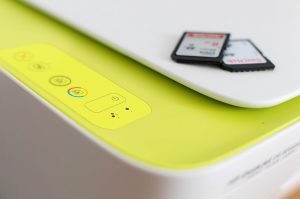The advancement in technology has brought about a wide range of machinery used in the printing industry. The major industrial printing process includes
- Offset lithography
- Flexography
- Digital printing: inkjet and xerography
For specific applications, some printing techniques have also been developed, and they include intaglio, flock printing, pad printing, letterpress, and thermography. Certain jobs are better printed using one of the processes listed.
Offset lithography is a technique used to print on flat surface materials, e.g., flat surface paper, cardboard, plastic or other flat materials. In offset lithography, the image of the content that needs to be printed is usually contained in a printing plate often made of aluminium. The image on the aluminium plate is heated and subsequently trans ferred from the printing plate to a rubber blanket and finally to the printing surface.
ferred from the printing plate to a rubber blanket and finally to the printing surface.
Each sheet of paper is automatically fed into the press at the far end of the paper. There are basically 4 colours in the printing industry, and they include black, cyan, magenta and yellow. The black color is usually printed first, followed by cyan, magenta and yellow. The front of the machine is where the stack of the printed sheets is made visible, and the press operator uses the press console and monitors underneath the machine to control the printing. Offset presses use rolls of paper for higher work volume. The process is extremely fast to the extent that the printed paper’s needs to be forced dried. The oven is the black unit at the end of the press. Today, offset is widely used in the printing industry for a wide range of products such as large poster printing, books, newspapers, corrugated boors, stationaries, etc. Promotional printing materials are now migrating to digital printing trends while some packaging printing is moving to flexo.
Flexo (flexography)
Flexo involves printing contents on a printing plate usually made from rubber. The plate to produce the image is usually inked and then transferred to the printing surface for output. These techniques are often used to print on papers, metals, plastics, cellophane and other materials. Flexo is primarily used for printing product label, packaging and to a lesser extent used for printing newspaper. Today, several packaging printings are now migrating from flexo to digital printing.
Digital printing
The digital printing is the trend of today image creation technique and can be done in several ways. However, two technologies are widely used in the industry.
- Inkjet: Inject device is used to print on a wide range of material such as plastic, papers, canvas, doors, floor tiles, etc. A small drop of ink produces the image to be printed, and the inks are propelled from the nozzles of one or more print heads. The techniques are usually used for signage and posters. For short run publications as photo books or print booklets for advertising, the process is very economical and can sometimes combine with other kindsof presses to print variable data, such as the mailing addresses on direct mail pieces.
- Xerography: this is a dry printing/photocopying technique that operates around the basis of electrostatic charges. Xerography is common in everyday and industrial printing, mostly found in photocopiers, laser printers and fax machines. It is great for printing books and magazines due to the colour quality and clarity of prints. The process is being refined over the years with more high-tech machines and capabilities, it really is a cool process as electromagnetic charges fuse together and create a copy of the image to be printed.